Veiled chameleons are very popular reptilian pets, both with new and experienced reptile owners.
Chameleons are popular because they change color, offering an interesting pet to watch and enjoy, but what do these color changes mean? Do you need to be concerned?
Continue reading for detailed information on why your veiled chameleon is changing colors.
Why Do Veiled Chameleon Change Color
The most common reason why your veiled chameleon is changing colors is to blend into their environment, by cleverly camouflaging themselves to deter predators.
Blending into their environment is not the only reason why your chameleon is changing colors. It could be to chase away another male chameleon, impress a mate, or as a result of stress.
Dramatic color changes can be due to temperature.
How Do Veiled Chameleon Change Color
There have been numerous studies to identify how chameleons have the ability to change their colors, making them such interesting and sought-after pets.
Chameleons have microscopic cells in their skin which reflects light differently, helping them adjust their color.
The cells, known as iridophore cells, contain crystals known as nanocrystals.
The nanocrystals are different sizes and arranged in different shapes, which causes light to reflect in various ways to help the chameleon change into a wide range of colors.
A chameleon’s skin is brimming with tiny crystals and when they relax or tense their bodies, moving their skin, the crystals move and reflect the light differently.
Skin cells are able to shrink and swell, enabling the cells to move closer together or even further apart.
Interestingly, scientists have identified that female veiled chameleons have fewer of these iridophore cells, which means male chameleons are able to change colors better than the female chameleon.
Related – How to sex a veiled chameleon.
Veiled Chameleon Color Chart
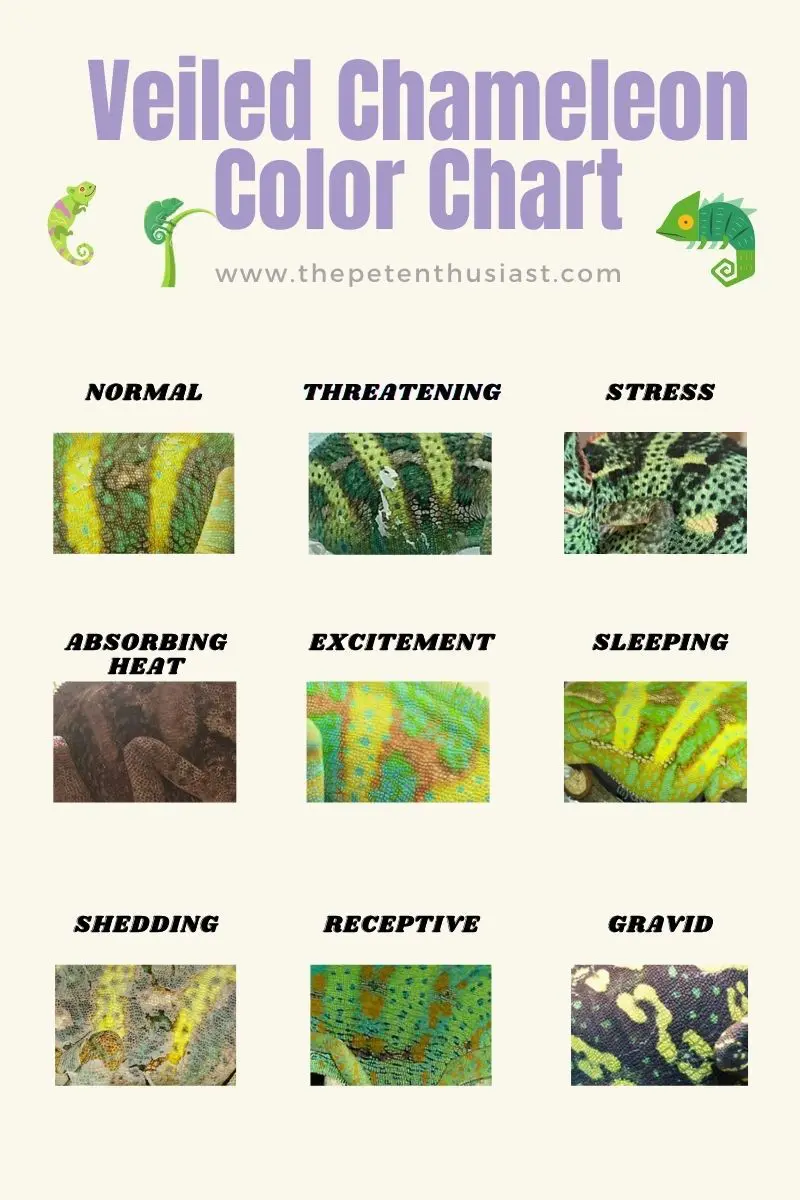
Normal Color
A veiled chameleon’s normal coloration is light green or blue. This is their everyday color.
Threatening Color
When threatened a veiled chameleon will have some contrasting patterns, with its base layer remaining green.
Stressed / Fear
If you notice that your veiled chameleon is turning black or very dark, it could be stressed or scared. This can be due to numerous factors from introducing your chameleon to a new enclosure to temperature problems.
Absorbing Heat
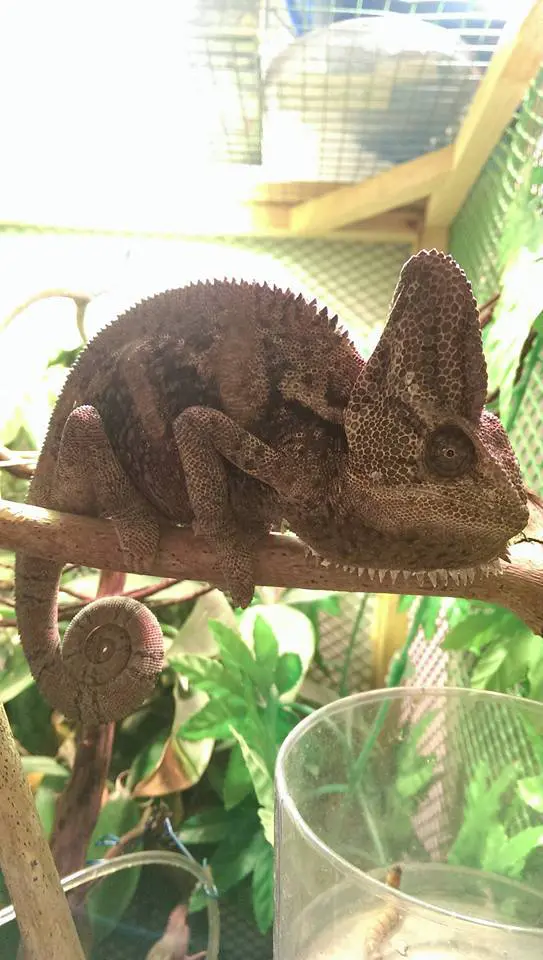
When your veiled chameleon is basking and absorbing heat it will change to a dark color.
It’s not uncommon for this to be the same colorations as being stressed or scared.
In order to identify if your chameleon is stressed or absorbing heat, you can turn off your heat source for a short period and see if your chameleon returns to green.
If it doesn’t return back to normal color, then your reptile is stressed.
Excited Color
An excited veiled chameleon will be brighter or paler in color. This could be excitement within its enclosure as it moves around the branches and foliage you have provided.
Sleeping Color
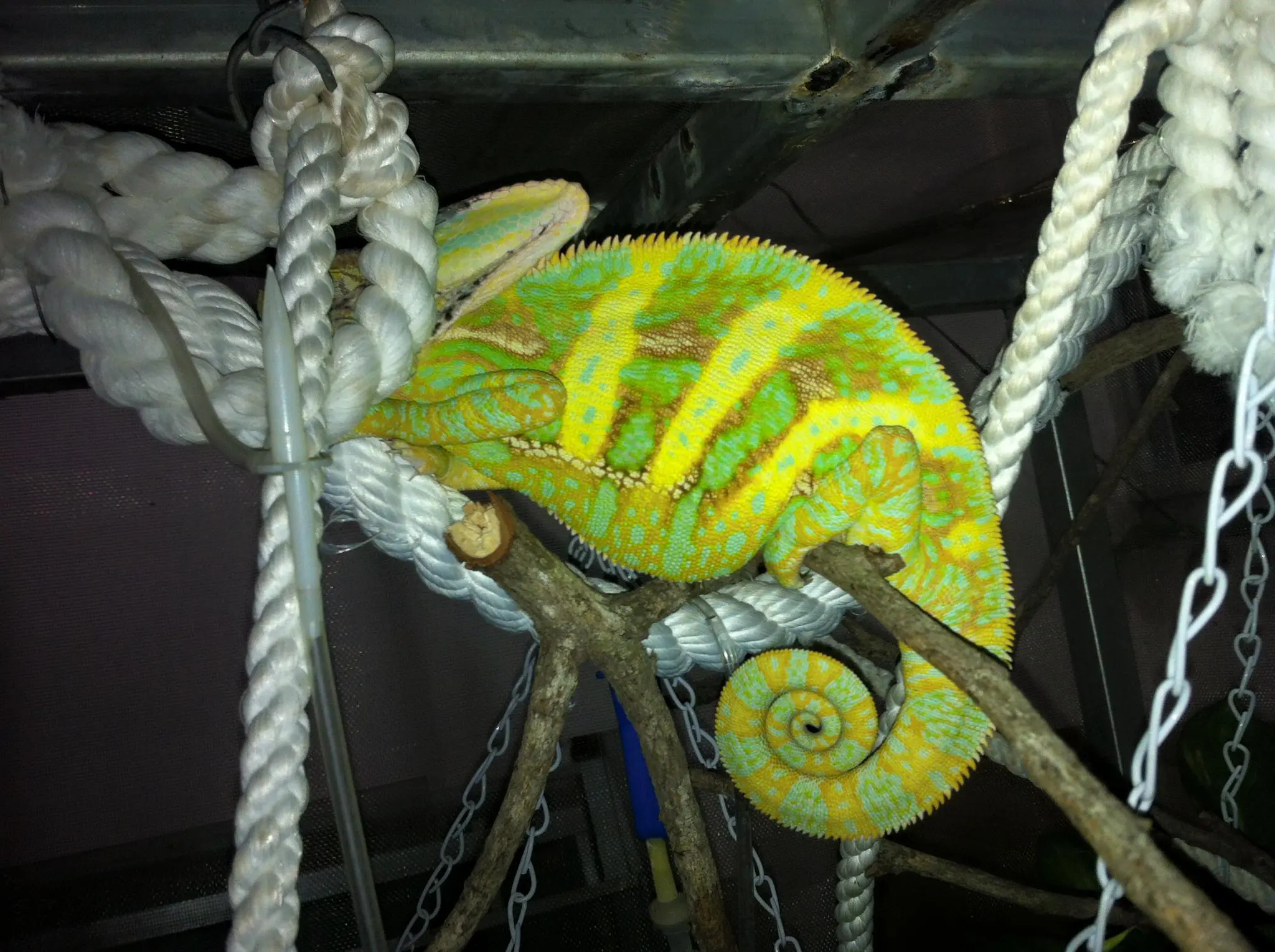
When a happy veiled chameleon is sleeping, it should be brighter in color. This is usually a bright green coloration.
Shedding
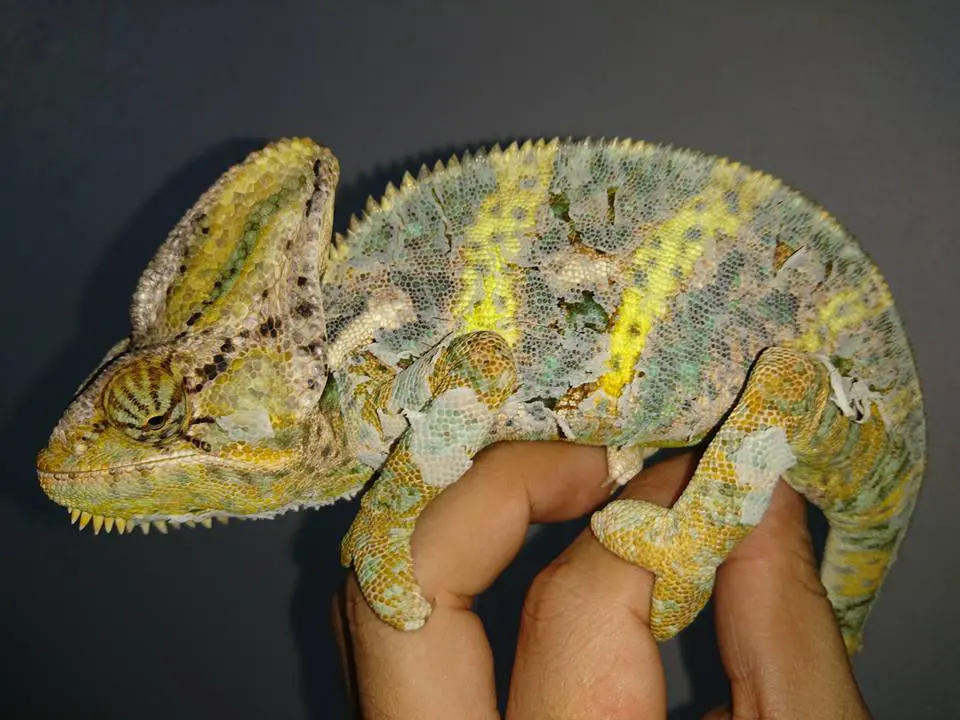
Veiled chameleons shed the same as other lizards. They shed their skin to accommodate growth. When a veiled chameleon starts the shedding process, it will turn white.
Mating Colors
When you have a male and female veiled chameleon together and they are ready to mate, they will show patterns that will display over their green bodies.
Gravid Females
A female veiled chameleon can be gravid without a male in the enclosure.
So, it’s not unusual for female chameleon owners to see their female change to a completely unique color during this period.
Veiled Chameleon Color Meanings
Veiled chameleons make very interesting pets and understanding their coloration and patterns can help you identify your chameleon’s mood, which can help you monitor your pet and keep it happy and healthy.
Neutral Colors
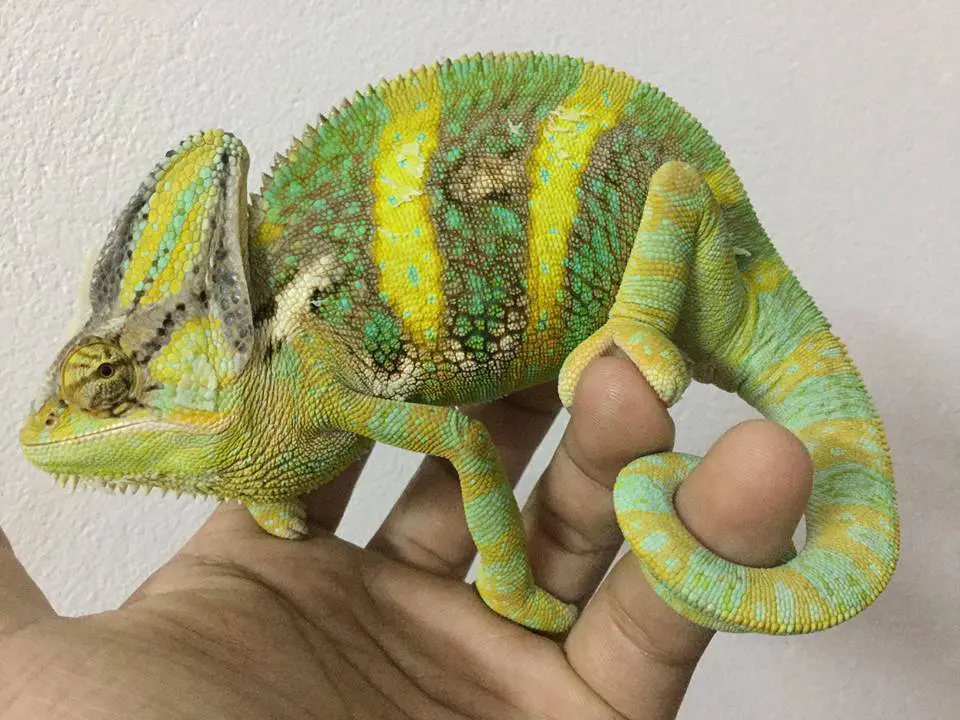
Adult veiled chameleons are light green when they are resting. There may be some lighter patches on the sides or a faint pattern.
Young veiled chameleons also remain a neutral light green color and are only able to start showing brighter colors when they reach around five months.
If your chameleon is healthy then it should be light green, only changing based on its mood and other circumstances.
Aggressive Coloration
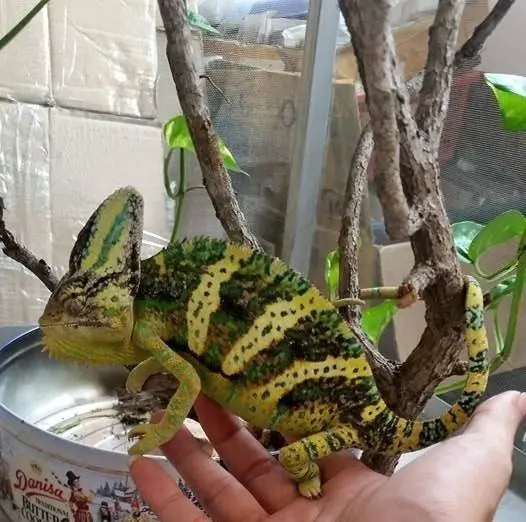
As your veiled chameleon ages, it will become more dominant and start displaying aggressive tendencies.
If you approach your reptile and it doesn’t want to be handled or approached, it will change its colors to a bright pattern.
The pattern is usually light green background with contrasting colors and patterns, including brown or yellow stripes, spots, and more.
These colors are shown when it’s aggressive, whether that is towards you or another pet in the home, maybe even its own reflection in the enclosure glass.
The bright pattern is to scare and intimidate its rivals. It’s a way to scare predators, as these chameleons cannot flee fast enough.
Related – How to tame an aggressive chameleon
Problem Coloration
A veiled chameleon is naturally a light green, but they can change to brown or beige, doing away with their green coloration all together. This can be due to your chameleon soaking up the sun or it can be a sign that your chameleon is sick.
If your chameleon stays brown or beige without changing back to its original neutral green, then it’s worthwhile visiting the vet for a checkup.
Mating and Gravid
Males will change color patterns to show they want to mate or fight. An adult female will show a special pattern if she is willing to mate. A willingness to mate for a female includes gold stripes on a light green or blue background.
A gravid female is when the chameleon is pregnant with eggs. She will display a gravid color when approached by a male. This includes a dark green background, bright yellow, and light blue dots.
Females can be gravid with or without a mate. She will lay the eggs, but if not fertilized, they will not hatch.
Thank you so very much for this in depth report, I learned so very much.
I learned I have a very happy healthy chamo.
💚🦎
I have an almost 2 year old chamelon a
Friend gave him to me so im new to this. I need help on why my chamelon has dark colors on his head hes been like that for three days now. The temperature is where is should be top to bottom he is pooping fine and eating fine he hasn’t drink the water that is dripping yet i think he is still trying to get used to it i have both lights UVB and heating light.
I can’t figure out what is wrong with him and his color not going back to normal on top of his head? If you can email me back at [email protected] please and thank you.
I just got a veiled chameleon and it’s green and white idk what it means
probably It’s about to shed
Why is my chameleons tail not curling